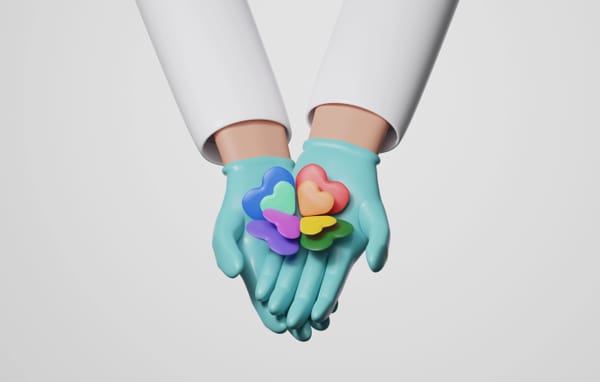Dating and Disclosure as a Transgender Individual

Dating while trans requires balancing the excitement and potential of new relationships with the realities of self-disclosure, safety, and the fear of rejection or discrimination. Whether you’re exploring relationships for the first-time post-transition or have been in the dating world for a while, disclosure remains a central theme. How and when to disclose your gender identity is a deeply personal decision, and it impacts not only your emotional well-being but also the dynamics of the relationship itself.
This guide aims to explore the important factors transgender individuals should consider when dating, offering advice on disclosure, emotional self-care, safety, and understanding the challenges that come with being a trans person in the dating world. It will also provide tips on how to approach these sensitive topics with confidence, empowering you to make the choices that feel right for you.
Understanding Dating as a Transgender Person
Dating as a transgender person is unique because it involves both personal growth and challenges that cisgender individuals may not experience. While trans people deserve the same opportunities for love, companionship, and connection as anyone else, the reality is that navigating the dating world as a trans person often includes added layers of complexity. These complexities can be emotional, psychological, and even physical in nature.
Some of the common challenges include:
- Stigma and Misunderstanding: Unfortunately, transgender individuals often face societal stigma, stereotypes, and misunderstanding. This can lead to prejudices in dating environments, where cisgender individuals may be hesitant or uninformed about what it means to date someone who is trans.
- Safety Concerns: Safety is a significant concern for many trans individuals when dating. From the potential for violence to the risk of being outed before one is ready, these factors need to be considered when deciding whether and how to disclose your gender identity.
- Discrimination and Rejection: Dating apps and sites can be hostile spaces for transgender individuals, where profiles may be subject to rejection or harassment. Discriminatory behavior from potential matches can take a toll on one’s mental health, so it’s important to approach the dating scene with resilience and awareness.
- Disclosure Decisions: One of the most significant aspects of dating as a trans individual is deciding when and how to disclose your gender identity. This decision depends on personal comfort, safety, and the nature of the relationship.
Despite these challenges, it is possible to find love, intimacy, and meaningful connections. Many trans individuals share feeling empowered and validated when they find supportive, open-minded partners who celebrate their identity.
The Importance of Disclosure: Honesty and Timing
When it comes to dating and relationships, disclosure refers to the moment when you share your gender identity with a partner. Whether you disclose early on or wait until you're more comfortable with the person, this moment can be both exciting and fraught with anxiety. Here are some key considerations to help guide your decision:
Why Disclosure Matters
Disclosing your gender identity is a personal choice that comes with several considerations. It's about ensuring the relationship is built on trust and authenticity. For some, the act of disclosing their gender identity is empowering, offering the opportunity to educate and inform a potential partner. For others, it may feel more vulnerable, requiring emotional readiness and a safe environment.
- Transparency Builds Trust: By sharing your gender identity, you allow the potential for more genuine connection. Disclosing early may help avoid misunderstandings or the discomfort that arises when your partner finds out later in the relationship.
- Protecting Yourself: Disclosing allows you to gauge how your potential partner responds to your identity. This can help you avoid the emotional pain of being rejected or hurt by someone who may not respect your journey.
- Empowerment and Self-Acceptance: For many trans individuals, disclosing their identity is an affirmation of their authentic self. It is an empowering moment to embrace who you are and share that with others.
When to Disclose
The timing of your disclosure depends on several factors, including the nature of the relationship, the level of trust you’ve developed, and your personal comfort. Here are a few approaches to consider:
- Early Disclosure (First Few Conversations): Some individuals choose to disclose their gender identity early in a conversation, especially if they’re using online dating apps where visibility and honesty are key. This can be beneficial in ensuring you’re only attracting individuals who are open-minded and respectful.
- After Initial Chemistry is Built: Others may prefer to wait until they’ve developed some level of trust or emotional connection with the person before disclosing their gender identity. This approach allows time to assess whether the relationship has potential and whether your partner is someone who is open-minded and accepting.
- Waiting for the Right Moment: For those who feel more cautious, waiting until the relationship becomes more serious or intimate may feel more comfortable. However, this can also bring challenges, as keeping your identity a secret might lead to feelings of guilt or fear of rejection when the truth comes out.
Ultimately, there is no "right" time to disclose—it’s about what feels safest and most comfortable for you. Trust your instincts and allow your sense of security to guide you.
How to Disclose Your Gender Identity
Once you’ve decided to disclose your gender identity, the next step is figuring out how to do it in a way that feels comfortable and safe. Here are some practical tips for disclosure:
Be Honest and Clear
When disclosing your gender identity, it’s important to be clear and straightforward. Avoid ambiguity or downplaying who you are, as this can lead to confusion or mistrust later on. For example, if you’re using a dating app, you might consider writing something like:
- "I’m a trans woman and I’m looking to connect with people who understand and support my identity."
- "I’m a trans man and I’m open to meeting like-minded individuals who respect my journey."
Prepare for Questions
When you disclose your gender identity, it’s natural for your partner to have questions. Be prepared to answer these, but only to the extent that you’re comfortable. Some common questions might include:
- "How long have you known you were trans?"
- "What does your transition look like?"
- "How do you feel about your body now?"
Remember, you are under no obligation to answer any question that feels invasive or too personal. Set boundaries around your disclosure, and be honest about your comfort level in sharing details.
Gauge Their Response
It’s important to observe how your potential partner responds. A supportive, respectful partner will approach the situation with kindness and curiosity, without making you feel ashamed or uncomfortable. If your partner reacts negatively, it’s important to assess whether that relationship is worth pursuing.
If you’re unsure how they will react, consider starting with a smaller, more casual mention of your identity. For example:
- "I just want to share that I’m trans, and it’s important to me that you know so we can be open with each other."
Managing Rejection and Discrimination
Unfortunately, rejection and discrimination are realities that many trans individuals face when dating. It can be emotionally difficult to be rejected because of your gender identity, but it’s important to remind yourself that your worth isn’t tied to someone else’s ability to accept you.
Dealing with Rejection
Rejection can feel painful, but it’s a natural part of the dating process. If you are rejected after disclosing your identity, allow yourself time to process those emotions. Don’t internalize the rejection as a reflection of your worth or attractiveness. Everyone deserves love, respect, and acceptance.
Fighting Back Against Discrimination
Discrimination in dating isn’t always blatant, but microaggressions or prejudiced behavior can often be felt. If you encounter discriminatory comments or actions, it’s important to protect your emotional well-being. You have every right to set boundaries, block individuals, or report harmful behavior on dating platforms.
Navigating Safety While Dating as a Transgender Individual
Safety is a critical concern for many trans individuals in dating, particularly when it comes to meeting people online or going on dates in public. Here are some ways to stay safe:
- Keep Conversations Online Initially: When possible, start conversations online to gauge a person’s attitude before meeting them in person. This also provides you with an opportunity to disclose your gender identity in a way that feels more controlled.
- Meet in Public Places: If you’re meeting someone for the first time, always meet in public places like coffee shops, restaurants, or other busy areas. Avoid private or isolated locations until you’ve built a level of trust.
- Share Your Plans with a Friend: Before going on a date, let a close friend or family member know where you’re going and who you’re meeting. It’s always a good idea to have someone aware of your plans for added safety.
Resources for Transgender Dating and Support
There are several resources available to support you in your journey through dating. Here are some helpful organizations and tools:
- Transgender Dating Apps: Platforms like OkCupid, Tinder, and Her have made strides to offer inclusive spaces for trans people. Additionally, niche apps like Taimi and Grindr provide specific settings to help you find LGBTQ+ and trans-friendly people.
- Transgender Support Groups: Groups such as Transgender Lifeline (www.translifeline.org) and PFLAG (https://www.pflag.org)



